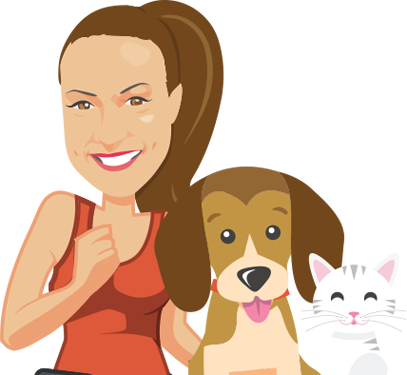Just like humans, pets need a balanced, nutritional diet to keep them happy and healthy. A lot of house pets, however, are being overfed or consuming too much unhealthy food during the day. According to the Association for Pet Obesity Prevention, in 2018 approximately 60 percent of cats and 56 percent of dogs were overweight or obese in the United States. A pet that is overweight is more prone to health issues and the excess weight can impact longevity. Keep your pet’s weight under control by following some of the healthy treat and meal ideas below.
Healthy pet treats
Treats are an excellent tool for training your pets, but it’s important not to get carried away. Snacks should only make up about 10 percent of a dog’s daily diet. If you’ve noticed your pup or kitty packing on a few pounds, then switch from the calorie-dense treats you get from the store to fruits and vegetables. Below is a list of whole foods you can try cutting up and feeding your pets as treats.
- Apples
- Bananas
- Blueberries
- Cucumbers
- Pears
It’s always a good idea to double-check what foods are safe before offering a treat to your pet. While the above fruits and vegetables are good for your animals in moderation, some foods, like grapes and raisins, can be toxic to your pets. It’s also a good idea to check with your vet before offering some of these healthy snacks to your animals. If your cat or dog has any medical conditions, certain whole foods might not sit well.
Preparing a healthy pet meal
Considering the number of obese pets in the U.S., it’s clear people have a hard time determining how much food to give their animals. It’s incredibly important for your pet’s overall health to figure out the right amount of daily food. A lot of factors have to be considered when making this decision such as size, activity level, type of pet food, and the number of meals.
A good place to start is checking with your vet about the recommended weight of your pet. Once you have a number in mind you can monitor weight gain or loss a little better. From there, you can also look at food intake. If you feed your dog or cat dry food from a bag, then look at the recommended portions listed on the back. This is usually a pretty accurate assessment of how much you should be feeding your pet on a daily basis.
Choose a feeding style
You can also look into various feeding methods. For instance, free-feeding is when you place a bowl of dry food out for your pet and leave it there all day. Your cat or dog can eat whenever it feels hungry and you don’t have to worry about getting back for mealtime. Of course, the risk with free-feeding is overeating. Certain breeds of cats and dogs will eat well past feeling full, so make sure you only choose this option if your pet has a bit of self-control.
The other option would be scheduled feedings. With scheduled feedings, you can either measure out portions or set out a bowl filled with food for 20 minutes. If your pet is already a little overweight, then portion-controlled feedings are best. This way, you can monitor calorie intake.
If you decide to start mixing in whole foods during mealtime, make sure you’re providing balanced nutrients for your cat or dog. Often, when people decide to prepare their own healthy meals for pets, they end up leaving out certain nutrients vital for their dog or cat’s wellbeing. Make sure you fully understand what vitamins and nutrients your pet needs during mealtime so you can provide the most nutritious food possible. A well-balanced diet will keep your beloved fur babies in good health so they can stick around for many more years to come.




